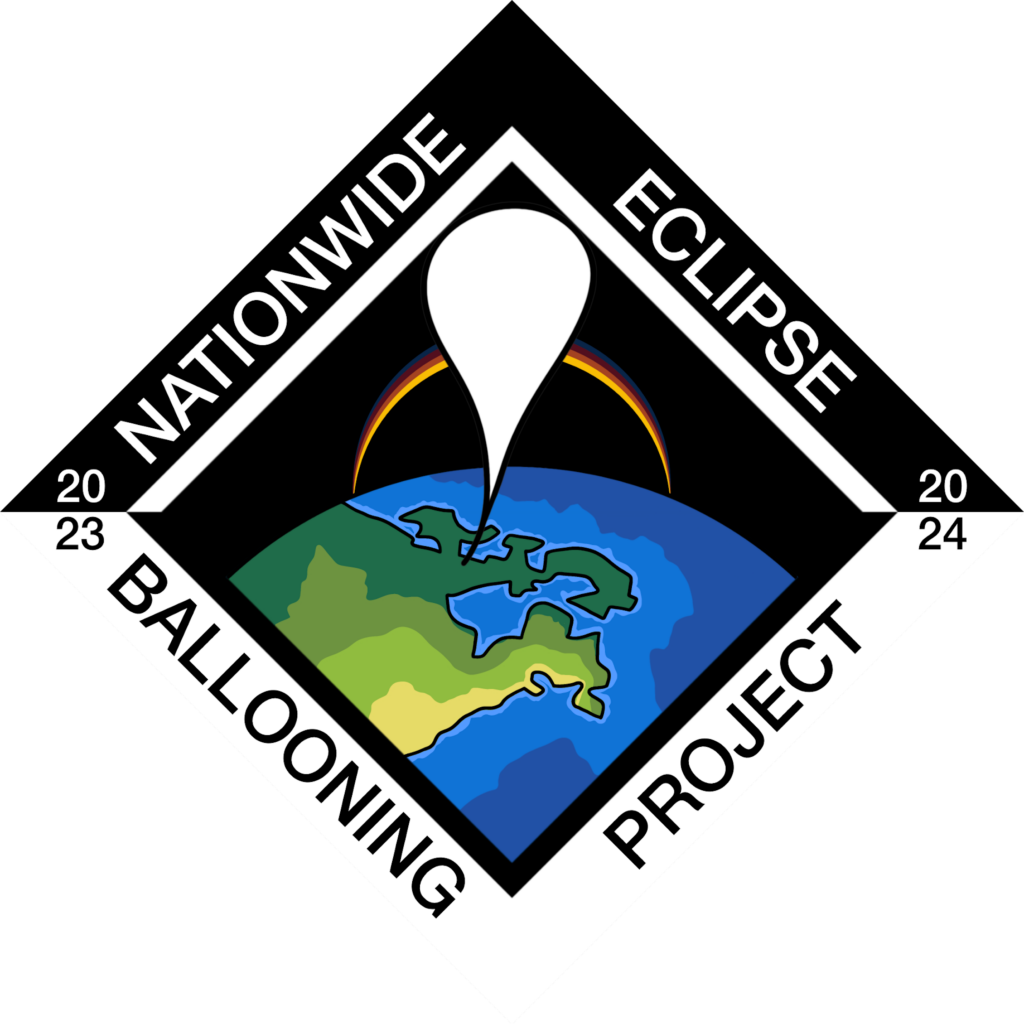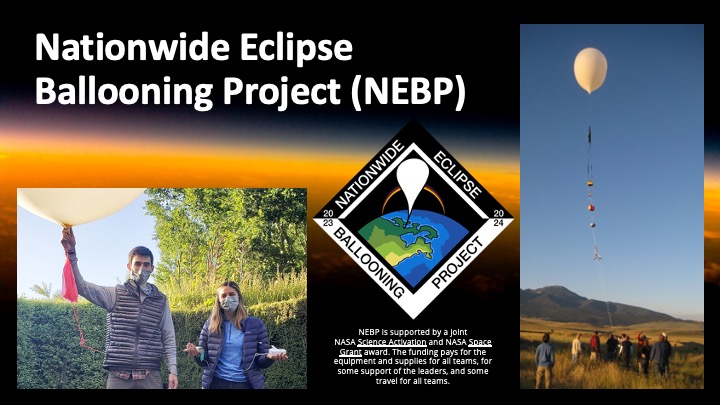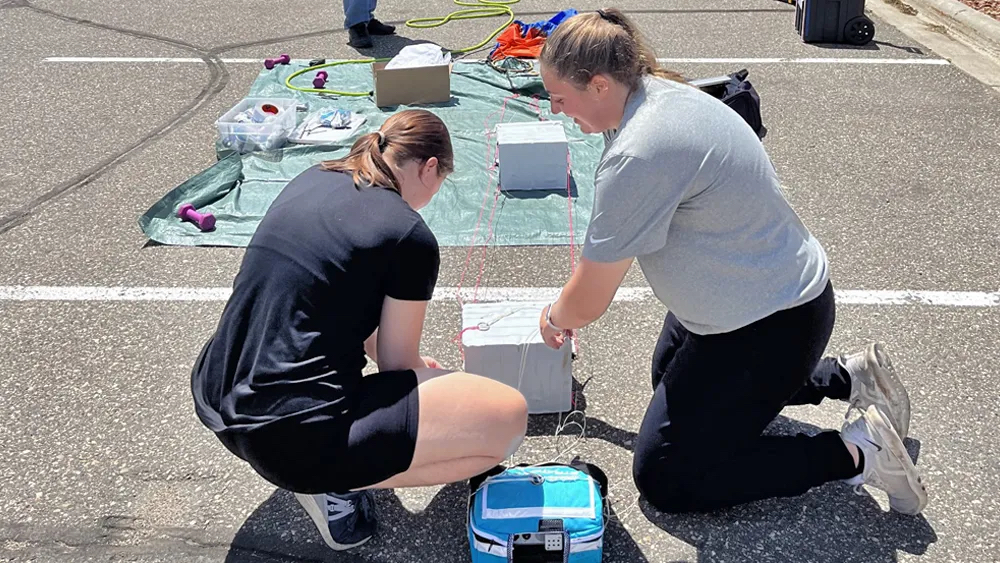 A team from St. Catherine University has received a grant from the Montana Space Consortium to participate in the National Eclipse Ballooning Project (NEBP). Through the NEBP, teams of high school and college students from across the country will conduct research during upcoming solar eclipses in 2023 and 2024 by sending weather balloons into the upper reaches of the earth’s atmosphere.
A team from St. Catherine University has received a grant from the Montana Space Consortium to participate in the National Eclipse Ballooning Project (NEBP). Through the NEBP, teams of high school and college students from across the country will conduct research during upcoming solar eclipses in 2023 and 2024 by sending weather balloons into the upper reaches of the earth’s atmosphere.
The project is led by the Montana Space Grant Consortium and funded by the Science Activation program within NASA’s Science Mission Directorate, with additional support from the National Space Grant College and Fellowship Project (NASA Space Grant) and NASA’s Balloon Program Office.
 St. Catherine University is a member of the Minnesota Space Grant Consortium (MnSGC), which is part of NASA Space Grant. The Collaborative Research Summer Scholars Program is also a longstanding and current supporter of this research at St. Kate’s.
St. Catherine University is a member of the Minnesota Space Grant Consortium (MnSGC), which is part of NASA Space Grant. The Collaborative Research Summer Scholars Program is also a longstanding and current supporter of this research at St. Kate’s.
“The Nationwide Eclipse Ballooning Project is an important educational experience for participants,” said Angela Des Jardins, director of the Montana Space Grant Consortium. “But it’s also designed to gather important, solid science.”
The St. Kate’s team is headed by Erick Agrimson, associate professor of physics, and includes Kadiatu Kaya ’24 (Summer Scholars student), Susan Odewale ’25 (Summer Scholars student), Abby Conrad ’24, and Bronwyn Hicks ’24

The grant will allow the team to travel to New Mexico in October to conduct atmospheric research during an annular eclipse, in which the moon blocks about 90% of the sun, resulting in a “ring of fire.” Then, in April 2024, the team will travel to Taylor University in Indiana to be in the path of totality during a total solar eclipse, when the moon will completely block out the face of the sun.
“I am looking forward to being able to see firsthand how the atmosphere changes during an eclipse,” said Conrad, an exercise and sport science major. “It is one thing to feel the difference when you are there, but it is another thing to have the data that supports what you are feeling, so I am excited to see how the data matches what we feel.”
During both eclipses, the team will send up weather balloons similar to those used by the National Weather Service into the upper reaches of the atmosphere to study factors like temperature changes, pressure changes, and wind directions. The St. Kate’s team will work in partnership with teams from St. Cloud State University and Fond du Lac Tribal and Community College.

“I am also excited to see how St. Kate’s specific research is amplified by the data we will obtain during the eclipse, because it is not data we can get every day,” Conrad said. “I am hoping to be able to experience a once-in-a-lifetime event surrounded by a community that can appreciate it not only for its beauty, but also for what it means in terms of science.”
As one of the few teams selected from a Division III institution, the St. Kate’s students will benefit from direct experience with a national network of higher education institutions and partners. “There will be a number of folks at different locations, and this is going to allow us to get lots of different universities working together that normally don’t communicate in that way,” Agrimson said.

Students at St. Kate’s conducted similar research during the total solar eclipse in 2017. A team of students and an alumna led by Agrimson traveled to Aurora, Nebraska, in the path of totality, and sent balloons up into the atmosphere. St. Kate’s was the only all-women’s team in the country that year, and a chance encounter with third grade students brought home the impact that early exposure to careers in science can have on younger generations. During the eclipse next spring, the team’s focus will include outreach and meeting with elementary, middle, and high school students to show them the possibilities open to women in STEM.
“We can all do important science, and undergrads can do critically interesting science for the public. The fact that NASA is interested in this tells us that,” Agrimson said. “[There are] two goals: one is really important science, and the other is really important outreach. It’s going to be a lot of fun.”
Nationwide Eclipse Ballooning Project
Minnesota Space Grant Consortium
UMN Twin Cities to be Pod Lead for NASA Eclipse Project

